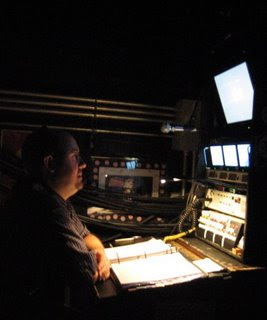The four of us rendezvoused in Whistler Village and boarded a van that took us to the airport for our flight back to Vancouver.
In conjunction with our train tickets, we also booked a flight on Whistler Air back to Vancouver. We would be flying on a float plane taking off from Green Lake and landing right in Coal Harbour along side the cruise ships and giant container ships.
Our plane was the largest one at the dock with seating for 12.
The same guy who picked us up in the van, flew the plane! He arranged our seating in the plane to evenly distribute our weight. The pilot asked for a volunteer to sit up front in the co-pilot's seat and I may have actually jumped up and down saying: "Pick me! Pick me!"
It only took a few minutes to get us all settled and strapped in. Of course, there were no flight attendants, our pilot was also the cabin attendant and our DJ. We all wore headsets both to block out the noise of the engines and to allow the pilot to talk to us. His I-Pod was jacked in to the com so he also played music for us!
After a quick phone call to air traffic control, we were riding across Green Lake and then we were airborne.
Our flight took us up alongside Blackcomb, over Whistler Mountain, and through the mountain range. We flew at the level of the mountain tops, making the views absolutely amazing.

Our pilot also pointed out some sights (including some bears on the ski trails below). Black Tusk is the name of of the mountain pictured below. It's the remnant of the vent of an ancient volcano. The volcano was first active more than 1.1 million years ago. Around 170,000 years ago (after the glaciers receded) the volcano rose to it's peak before becoming dormant. Since then, the rest of the vent (probably made of softer ash) has weathered away leaving only the dramatic spire of black volcanic rock now known as Black Tusk. At 7,600 feet tall, it's visible and easily identifiable from all around. According to the legends of the local Indians, Black Tusk is the home and nesting place of the Thunderbird.

The area around Black Tusk was once a very active area for volcanoes. Though the last major eruption was more than 2,000 years ago, the evidence of the volcanic activity is everywhere. The Table or Table Mountain was created when an ancient volcano erupted under a glacier in the Holociene era. The magma forced its way upward in a cylindrical shape but never broke through the ice sheet. The magma cooled to form Table Mountain - gravity kept the top of the hot magma flat.
.JPG)
Mount Garibaldi is the most dramatic mountain in the portion of the range we flew through. Also formed by volcanic activity, Mount Garibaldi towers around everything else at more than 8,700 feet. It is a potentially active volcano - meaning that it has not erupted in historic times, but it has active lava chambers within it. The mountain is home to two significant glaciers. The one pictured below is the Diamond Glacier. The views of the glacier from the air were nothing short of amazing. Deep cracks in the snow and ice seemed bottomless. Huge hunks of the glacier had broken off leaving ragged edges in their wake.

Shortly after we passed by Mount Garibaldi, the fjords of Howe Sound came into view. The fjords were created as the glaciers retreated and carved deep channels between the mountains. The mountains come right to the edge of the sea and drop dramatically in. The fjords of Howe Sound are the southern most fjords in the world.

Soon, Vancouver was peeking out between the mountains.

After all the mountains, the flatlands that make up Vancouver were quite a surprise. The waters of the sound and Burrard Inlet were the first hint that we were near the Pacific. Our pilot contacted air traffic control for Vancouver Harbour and a few minutes later we were touching down in the waters of Coal Harbour.

The whole flight only took about half an hour, but it was such a dramatic time. I was lucky to sit up front and have such a great view of the beautiful surroundings.









No comments:
Post a Comment